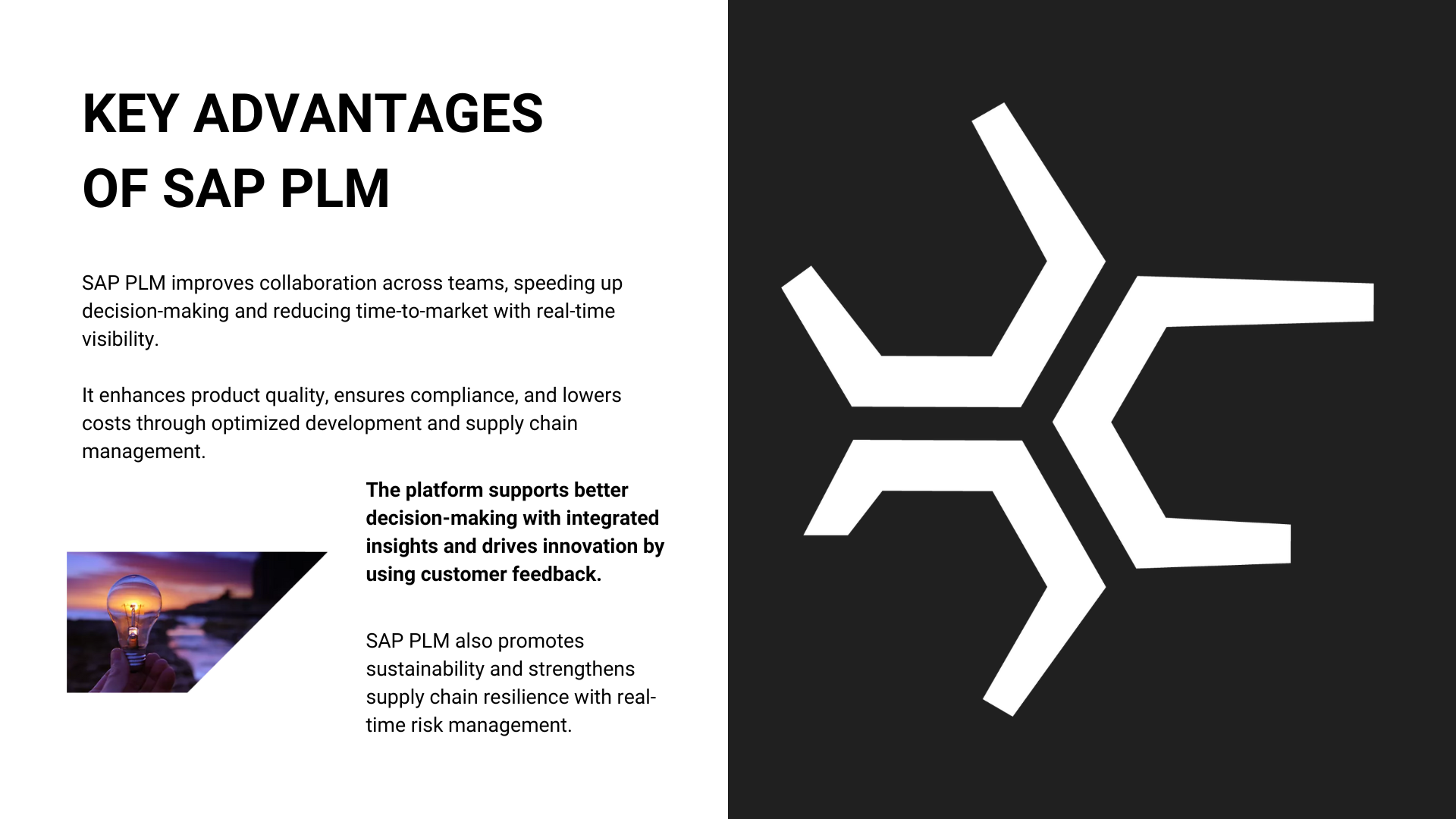What are the main advantages of using SAP PLM?
- Streamlined Collaboration: SAP PLM enhances collaboration across departments, enabling teams from design, engineering, manufacturing, and supply chain to work together seamlessly. This improves communication, reduces bottlenecks, and accelerates decision-making processes.
- Accelerated Time-to-Market: By providing a unified source of truth and real-time visibility, SAP PLM helps reduce the time required to bring products to market. It enables parallel processing and eliminates data silos, which is crucial for staying competitive.
- Enhanced Product Quality and Compliance: SAP PLM facilitates the creation, management, and continuous improvement of high-quality products throughout their entire lifecycle. By integrating compliance data and ensuring adherence to industry regulations, it streamlines the entire process— from the initial formulation and recipe development to the end-of-lifecycle management.
- Cost Reduction: By optimizing product development and manufacturing processes, SAP PLM helps organizations reduce costs. It integrates with ERP systems for better supply chain management, which minimizes delays and reduces material shortages.
- Enhanced Decision-Making: The platform provides actionable insights by integrating business and engineering data. This allows organizations to assess the impact of changes on costs, compliance, and lead times, leading to better-informed decisions.
- Support for Innovation: SAP PLM facilitates the continuous evolution of products by incorporating customer feedback and sensor data, helping companies innovate and stay ahead of the market.
- Sustainability and Risk Management: The platform enables the use of sustainable materials and supports compliance with environmental regulations, contributing to corporate sustainability goals. It also helps in building a risk-resilient supply chain by providing real-time insights and decision support.
